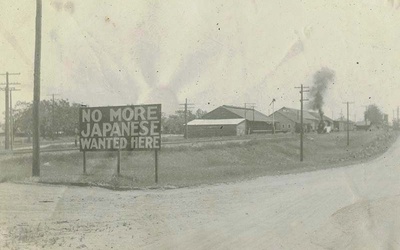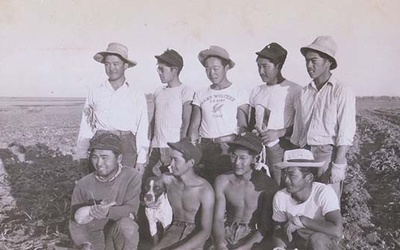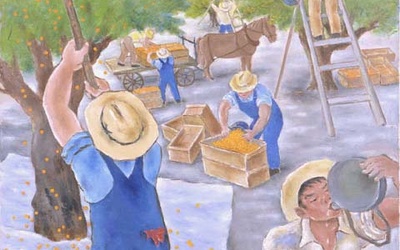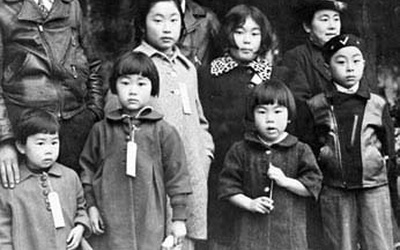Enduring Communities

Enduring Communities: The Japanese American Experience in Arizona, Colorado, New Mexico, Texas, and Utah is an ambitious three-year project dedicated to re-examining an often-neglected chapter in U.S. history and connecting it with current issues of today. These articles stem from that project and detail the Japanese American experiences from different perspectives.
Stories from this series
Japanese Americans in the Interior West: A Regional Perspective on the Enduring Nikkei Historical Experience in Arizona, Colorado, New Mexico, Texas, and Utah (and Beyond): Part 4
Nov. 6, 2009 • Arthur A. Hansen
>> Page 3 Unlike Armendariz, who chiefly builds her account of El Paso’s early Nikkei community from local newspaper articles, Miyasato relies heavily upon oral history interviews to construct her community narrative. Because these life stories provide a window through which to apprehend the special character of the Japanese El Pasoans and the complex ways they became embedded in the history, culture, and society of the Interior West region, they merit careful attention. The following representative sample focuses on Mansaku …
Japanese Americans in the Interior West: A Regional Perspective on the Enduring Nikkei Historical Experience in Arizona, Colorado, New Mexico, Texas, and Utah (and Beyond): Part 3
Oct. 30, 2009 • Arthur A. Hansen
>> Part 2 The two-pronged cause prompting the mass exodus of Issei railroad and mining gang laborers from Wyoming and Montana was their desire to pursue agricultural employment as well as the comparative paucity of opportunities to do so within these neighboring states. Wyoming suffered the most dismal agricultural scenario; subject to extremely cold temperatures and generally considered to be semi-arid, it was “climatologically inhospitable to farming.”1 According to Masakazu Iwata, while the great majority of Issei immigrants were …
Japanese Americans in the Interior West: A Regional Perspective on the Enduring Nikkei Historical Experience in Arizona, Colorado, New Mexico, Texas, and Utah (and Beyond): Part 2
Oct. 23, 2009 • Arthur A. Hansen
>> Part 1 The Nishizu family’s story of “relocation” and “resettlement” is only one among thousands of parallel versions involving other Japanese American mainlanders—truly a “people in motion”—during the World War II era. It is of particular value, however, because it spotlights and invites strategic exploration of a largely neglected aspect of Japanese American history, society, and culture: the prewar, wartime, and postwar circumstances of Nikkei communities within what historians Eric Walz and Andrew Russell have styled the Interior West …
Japanese Americans in the Interior West: A Regional Perspective on the Enduring Nikkei Historical Experience in Arizona, Colorado, New Mexico, Texas, and Utah (and Beyond): Part 1
Oct. 16, 2009 • Arthur A. Hansen
On February 19, 1942, President Franklin D. Roosevelt issued Executive Order 9066, which allowed U.S. military commanders to designate military areas as “exclusion zones” from which “any or all persons may be excluded.” This action came two and a half months after Japan’s December 7, 1941, attack upon Pearl Harbor—the U.S. naval station in the Territory of Hawaii then home to the main part of the American fleet—which precipitated the United States’s entry into World War II. Although it did …
Reclaiming California’s Japantowns
Oct. 3, 2008 • Donna Graves , Jill Shiraki
Preserving California’s Japantowns (PCJ) is the first statewide effort to identify, research, and document historic resources located in Japantowns throughout California. Sponsored by the California Japanese American Community Leadership Council (CJACLC), PCJ grew out of the energy from community forces rallied around the California Senate Bill 307 (SB307) campaign that focused on protecting the cultural heritage of the well-known Japantowns in Los Angeles, San Francisco, and San Jose. One of the ways the CJACLC convinced the state legislature to pass …
The Assembly Centers: An Introduction
Sept. 16, 2008 • Louis Fiset
On March 30, 1942, 257 Nikkei residents of Bainbridge Island, Washington, walked onto a cross-sound ferry to Seattle under military guard and boarded a train bound for the Manzanar Reception Center in California’s Owens Valley, 200 miles east of Los Angeles. This transport began the forced exile of 92,000 Japanese Americans directly from their homes in Washington, Oregon, California, and Arizona into so-called “assembly centers.” There they remained for approximately 100 days until their transfer to permanent “relocation centers” located …




























